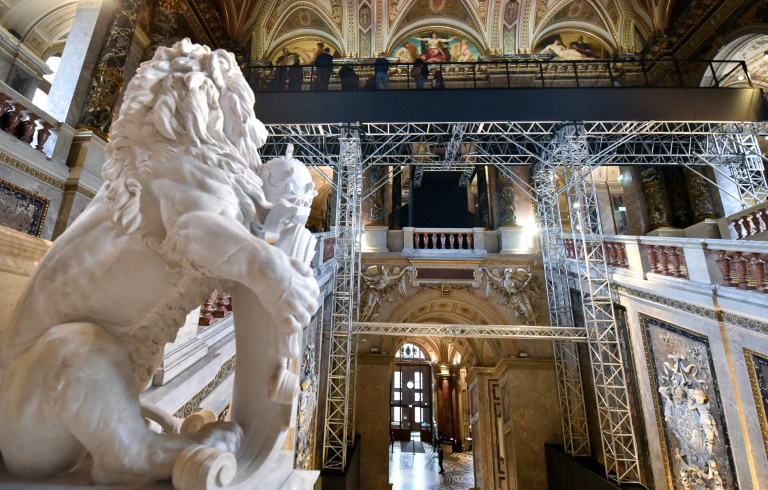Meta AI app ‘designed around voice conversations’ Zuckerberg says [VIDEO]
Visitors to Vienna's art history museum on Monday enjoyed a closer look at 13 of Gustav Klimt's unsung masterpieces thanks to a walkway erected over a monumental central stairway.
The sprawling Kunsthistorisches Museum (KHM), opened in 1891 under Emperor Franz-Joseph, houses one of Europe’s most important art collections while also showcasing interior design by the cream of Vienna’s artists and sculptors.

The eye-level experience is well worth the clumb up the “Stairway to Klimt”, as the museum has dubbed the installation, in a nod to the Led Zepplin song
Among those commissioned to decorate the building was Klimt, then 28 and considered a rising star of the Austrian neo-classical school.
But until now the museum’s 1.4 million annual visitors could only admire the paintings from afar.
The eye-level experience is well worth the climb up the “Stairway to Klimt”, as the museum has dubbed the new installation, in a nod to the song by heavy-metal band Led Zeppelin.
Paying homage to the Venetian, Roman and Florentine traditions of the Quattrocento, as well as to Egyptian art, the superbly preserved works are testament to the young Klimt’s artistic maturity and hint at the future course of the Vienna Secession.
They show his use of gilding, full-length portraits, monumental motifs inspired by Japanese prints and above all a delicate sensuality.
“Even though still attached to historicism, the work already shows the beginnings of Modernism,” said Daniel Uchtmann, art historian at the KHM.
This Egyptian-inspired nude goddess did not cause a scandal but was “quite daring”, the museum’s art historian Daniel Uchtmann told AFP
Of particular note among the works is of a nude Egyptian-inspired goddess depicted in a provocative pose. “Even though it didn’t cause any particular scandal, this sort of representation was quite daring in the context of a public building,” Uchtmann said.
Klimt had already been commissioned for several public projects with his brother Ernst, with whom he founded a company in 1883 for this purpose, the Kuenstler-Compagnie.
He continued pushing artistic boundaries before breaking free of the Association of Austrian Artists and helping to found the Vienna Secession movement.
In 1905 Klimt found himself forced to buy back three canvases from the University of Vienna after outrage sparked by their “provocative” nature.
The superbly preserved works pay homage to the Venetian, Roman and Florentine traditions of the Quattrocento, as well as to Egyptian art
The Stairway to Klimt is part of dozens of exhibitions being held in Austria this year to mark the centenary of Klimt’s death on February 6, 1918, as well as to honour three other major figures of Viennese modernism, Egon Schiele, Koloman Moser and Otto Wagner.
The stairway will stay in place until September 2.
Download our app